Canberra, located in the Australian Capital Territory, is teeming with cultural treasures and is the country of Australia’s meticulously designed capital. It is not by chance that the city is situated halfway between Sydney and Melbourne. In 1908, a middle ground between these two competitive cities was chosen as the location of the capital. For the city’s layout, which has extensive greenbelts and geometric patterns, American architects Walter Burley Griffin and his wife Marion Mahony Griffin won an international competition.
Are you seeking for the top activities in Canberra, the capital of Australia? Do not worry if you are unsure about the greatest spots to visit in Canberra. We recently went and were pleasantly delighted to find some fantastic things in Canberra. There are many free activities to do in Canberra, as well as free parking on weekends, if you’re seeking a budget weekend getaway from Sydney. Canberra is a place where you can spend a weekend and yet have an action-packed time without spending very much money.
New Parliament House
New Parliament House is an architectural wonder of the modern era and the ultimate realisation of architect Walter Burley Griffin’s concept for Canberra in 1912. The boomerang-shaped building, which fits comfortably into Capital Hill, was intended to take the place of the Provisional Parliament House, now known as Old Parliament House, which stood at the foot of the hill. The Queen formally opened Parliament House on May 9, 1988 after a New York-based architect won an international design competition. The month of May was selected to honour the inaugural meetings of the Federal Parliament in Melbourne in 1901 and the Old Parliament House in 1927.
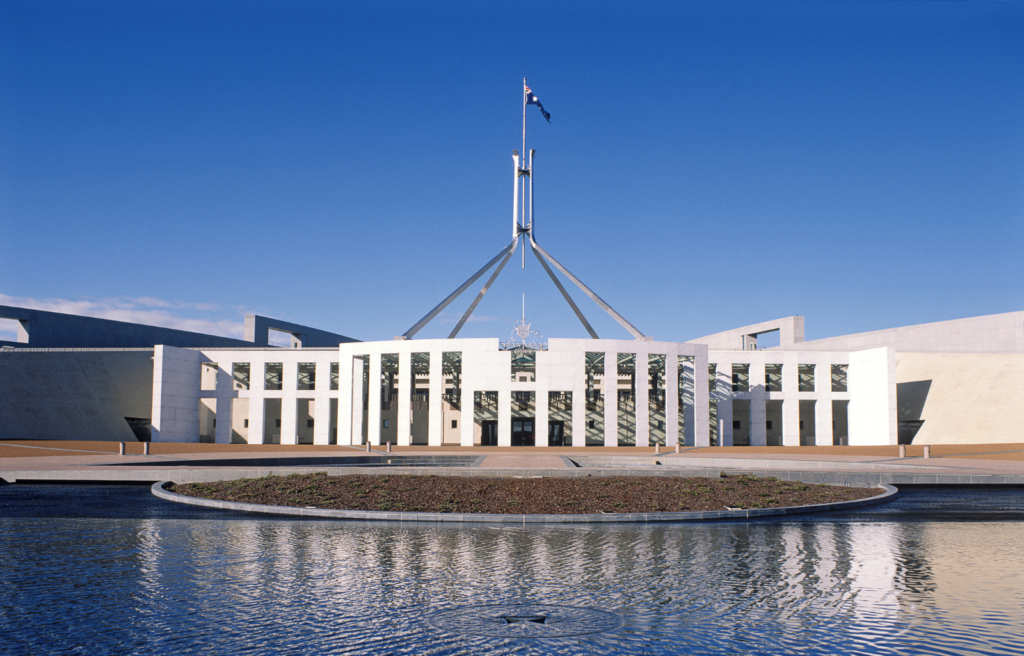
You can take in panoramic views of Canberra from the wide grassy path that serves as the roof, and you can see how Parliament serves as the primary focal point of the city’s street arrangement. Among the building’s architectural features are the two enormous circular walls made of granite that mimic the contours of the hill, the imposing 81-metre flagpole, and the Ceremonial Pool. A grove of eucalyptus is suggested by the foyer’s 48 lighted greenish-grey marble columns. Exhibits depict significant documents (the Magna Carta is a highlight) and recapitulate significant historical events in Australia throughout the public areas.
Australian War Memorial
Canberra’s most sombre landmark is the Australian War Memorial. The enormous Byzantine-style monument, which was dedicated in the middle of World War II, honours the war dead from Australia. But it’s more than just a memorial to the conflict. The location includes a fantastic museum with archives, a gallery, and a library. An eerie beginning may be seen in the Commemorative Courtyard near the memorial’s entry. Every Australian who has lost their life in battle since 1885 has had their names inscribed in bronze on the walls of the colonnades, and the list’s length is horrifying.
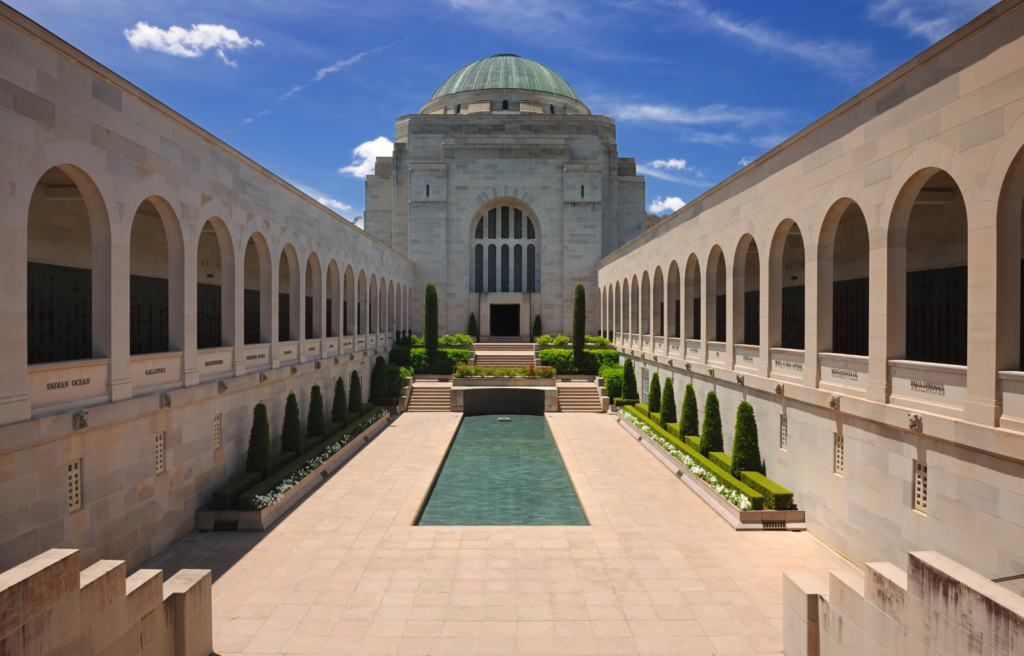
The histories of Australia’s military conflicts from the time of colonisation to the present are traced in several galleries outside the entrance. Highlights of the exhibitions include the collection of vintage aeroplanes and the family-friendly Discovery Zone filled with engaging exhibits. The Last Post, a stirring monument to the slain played everyday at 4:55 p.m., is a meaningful homage that you should attempt to attend if you can if you want to fully enjoy this thought-provoking memorial. If you’re visiting near the end of the day, try to stay for it. One of the greatest free things to do in Canberra is to visit the monument, and the 90-minute tours are strongly advised.
Museum of Australian Democracy
Old Parliament House, located at the foot of Capital Hill and next to New Parliament House, is now the Museum of Australian Democracy. You may not only take in the history of this National Heritage-listed structure, but you can also discover some of the significant pillars of the Australian government. The “stripped classical” edifice was inaugurated by the Duke of York (later King George VI) in 1927 and housed the Australian Parliament until 1988, when it was replaced by New Parliament House. Formerly known as Provisional Parliament House, it served as a temporary construction until a permanent one could be planned and constructed, a task that was accomplished 61 years later.
The museum resembles a time machine. You may study significant historical documents, visit the Press Room, sit in the ancient, modest Prime Minister’s Office, and learn about previous Australian prime ministers. With panelling, furniture made of Australian wood, and wall hangings featuring Australian flora, the House of Representatives and Senate chambers are designed after the British House of Commons and House of Lords. The free daily craft activities and kid-friendly exhibitions will be appreciated by parents. You wander around the National Rose Gardens after visiting the building. You may make the most of your visit by taking advantage of the free guided tours that are offered, as well as the intriguing Indigenous Experiences of Democracy trip.
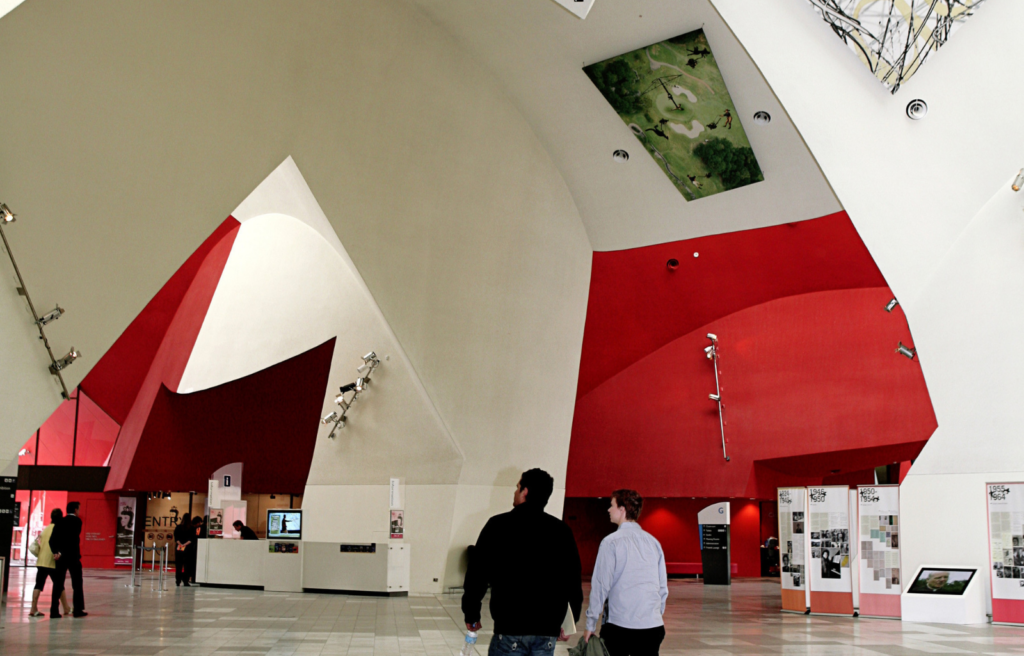
Lake Burley Griffin
Canberra’s focal point is the lovely Lake Burley Griffin. This man-made lake, which bears the name of the city’s architect, was a part of his original 1912 concept but wasn’t built until 1958. Today, it serves as a beautiful backdrop for a variety of outdoor activities. Locals and visitors alike come here to picnic, cycle, and stroll along the waterfront trails, fish, sail, and paddle in the beautiful waters. Are you looking for nighttime activities in Canberra? When you take a dinner cruise aboard the MV Southern Cross, you can enjoy fine dining while gliding around the lake and taking in the city’s sparkling lights.
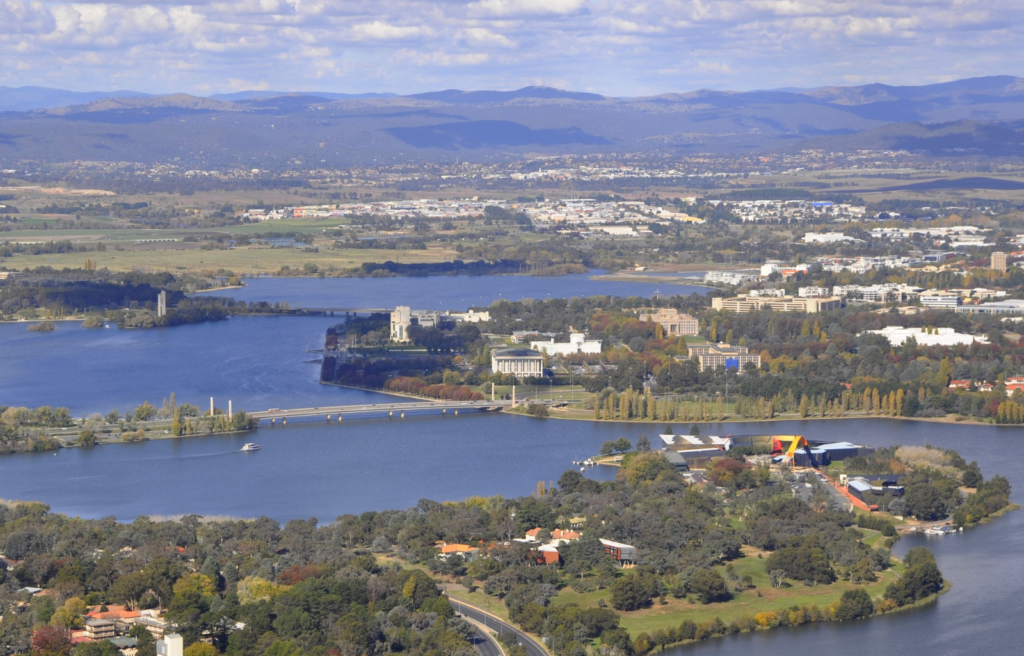
At its centre are six islands, the biggest of which is Aspen Island, where the National Carillon, a British government gift with 55 bronze bells, is located. The National Gallery, National Library, Questacon, and National Museum are just a few of the prominent attractions in Canberra that are dotted around the lake. On the 147-meter-high Captain Cook Memorial Jet, which was unveiled in 1970 to commemorate the 200th anniversary of Cook’s exploration of Australia, you can see it from the beaches of the central basin. At Regatta Point, a globe sculpture showing the route of Cook’s expeditions is located.
National Gallery of Australia
Australia’s biggest art collection is housed in the National Gallery of Australia, which is located besides Lake Burley Griffin. The three-story, cubic concrete building was unveiled by Queen Elizabeth II in October 1982. It has 11 major galleries, a sizable sculpture garden that is arranged according to the four seasons, and a fern garden. The huge collection was acquired beginning in 1968 and consists of pieces from Australia, Asia, Europe, America, and the Pacific as well as the world’s biggest collection of Aboriginal and Torres Strait Islander artwork. Jackson Pollock’s Blue Poles, which the museum acquired in 1973 and is now one of the gallery’s most well-known works of art, is among its holdings.
Oil paintings, watercolours, sculpture, ornamental art, sketches, book illustrations, sketchbooks, photography, videos, pottery, costumes, and textiles are just a few examples of the many different media. The numerous special exhibitions will be enjoyed by both locals and visitors. Visit the adjacent High Court of Australia after viewing the gallery for its beautiful fountains, Carrara marble flooring, and murals.
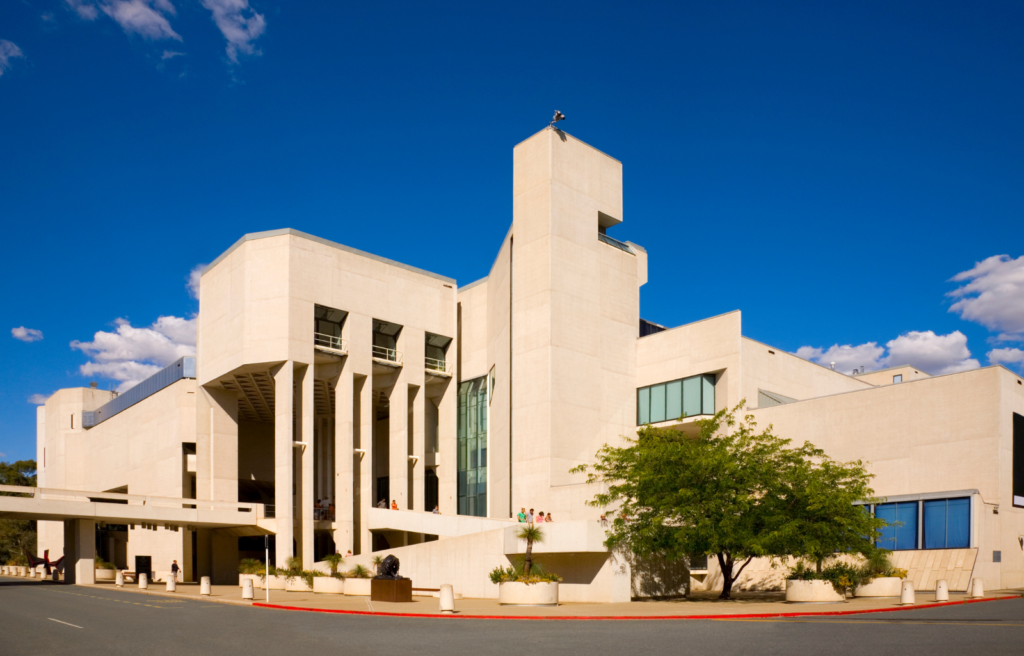
Questacon
Are you taking children on vacation? One of the greatest family-friendly attractions in Canberra is Questacon. It’s an interactive National Scientific and Technology Centre featuring a variety of hands-on science displays and do-it-yourself activities intended to inspire and entertain between the High Court and the National Library on Lake Burley Griffin. The exhibitions aim to increase awareness of the significance of science and technology in modern life. The 200 interactive displays are supplemented with science presentations, special events, and guest lecturers.

Beginner innovators can take part in classes, construct things, and experiment with technology at the Technology Learning Centre. The H2O-Soak up the Science room with water-related enjoyment, the Free Fall slide, and the Earthquake House are some of the highlights of the permanent exhibitions. It makes sense that this is one of the most popular family activities in Canberra.
National Portrait Gallery of Australia
The National Portrait Gallery of Australia exhibits around 400 portraits of the most significant figures in the country close to the High Court of Australia and the National Gallery. Face-to-face encounters with Australia’s trailblazers, brought to life via paintings, photographs, and sculpture, may easily take an hour or two. Special exhibitions offer fresh sights to view, and multimedia presentations reveal intriguing insights about the lives of the individuals who helped build the country. It’s simple to visit the gallery because parking is free, and the well-known café and bookshop are ideal places to end a trip.
National Library of Australia
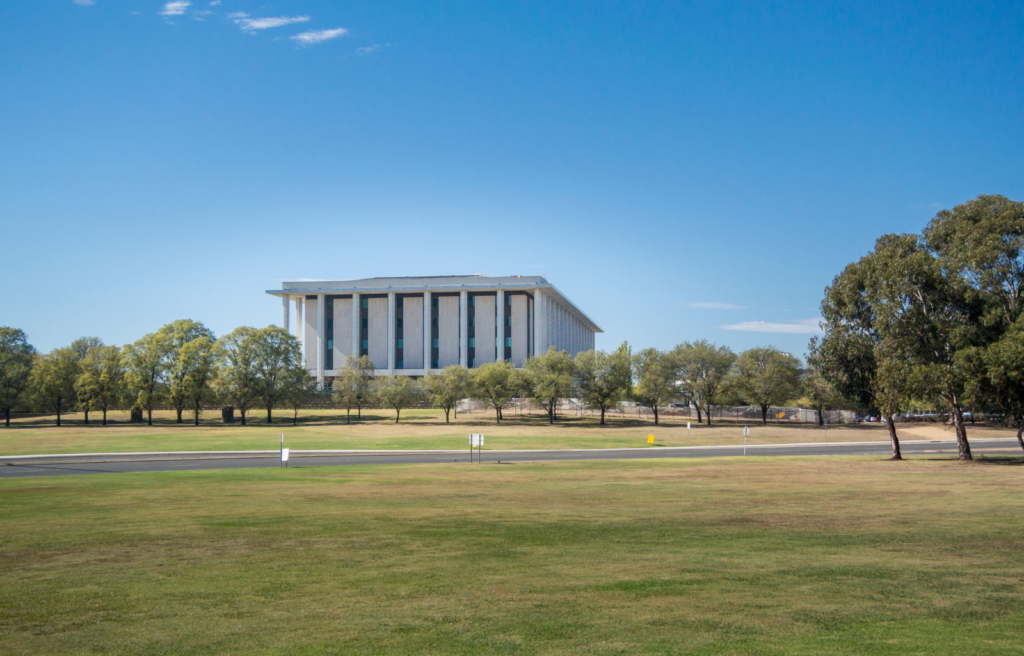
The National Library of Australia was established in 1968 and is home to an extensive collection of Australian literature, including books, manuscripts, newspapers, historical records, oral histories, music, and images. Captain Cook’s logbook (written between 1768 and 1771) and Wills’ notebook from the journey he took Burke on in 1860–1860 are among its most priceless items. The National Gallery and High Court are striking architectural counterparts to the edifice. The extensive use of marble and travertine on the columns and walls, which give the building a classical appearance befitting a Greek temple, emphasises its classical appearance. Additionally employed in the interior decorating was marble from Australia, Greece, and Italy.
Mount Ainslie Lookout
Visit the overlook on Mount Ainslie’s 843 metres for a better understanding of this beautifully designed capital’s layout. One of the most well-liked viewing areas in the city. From the Australian War Memorial’s back, a well-paved walking/biking track extends for slightly over two kilometres. You may stop at the commemoration plaques along the road to learn about famous Australian battles, and you could even spot some kangaroos and a variety of stunning birds.
Visit the overlook on Mount Ainslie’s 843 metres for a better understanding of this beautifully designed capital’s layout. One of the most well-liked viewing areas in the city. From the Australian War Memorial’s back, a well-paved walking/biking track extends for slightly over two kilometres. You may stop at the commemoration plaques along the road to learn about famous Australian battles, and you could even spot some kangaroos and a variety of stunning birds.
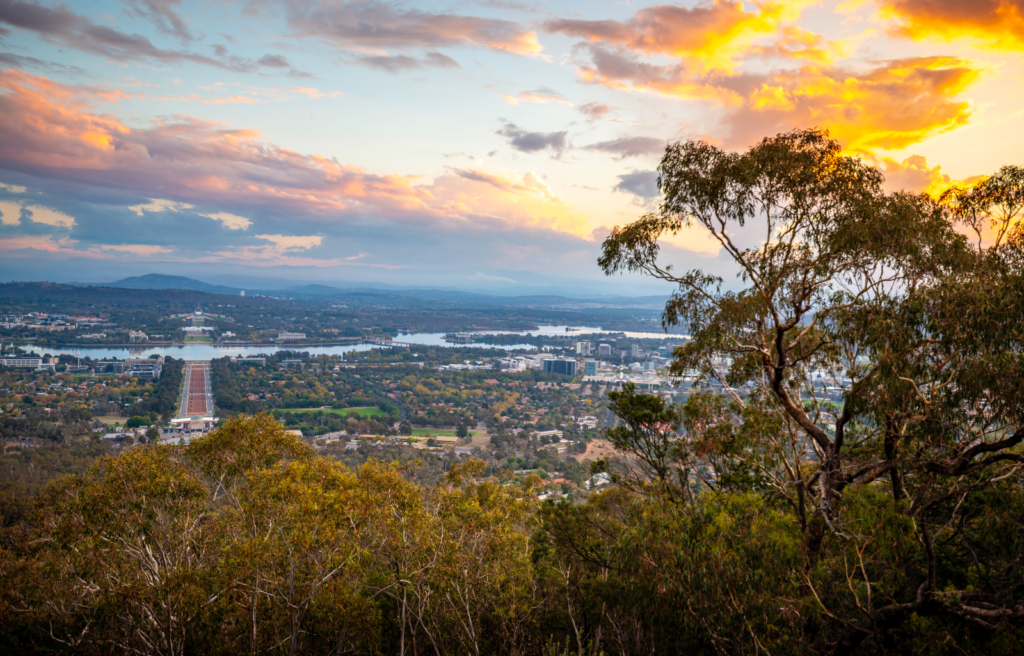
Driving up to the viewpoint is an additional option. The Anzac Parade, Lake Burley Griffin, Old Parliament House, and the slender New Parliament House in the distance are all precisely in line with the viewpoint according to Walter Burley Griffin’s vision. Bring a jacket if the weather is windy. Red Hill, which is south of here, and Black Hill, which is west, are two other well-known viewing areas.
Australian National Botanic Gardens
The 50-hectare National Botanic Gardens are about one kilometre west of the city centre and a must-see for everyone who loves plants. These meticulously maintained collections, which are dispersed throughout the Black Mountain slopes, feature a variety of varied habitats and all the significant Australian flora species. The area is a great place for kids to run around. It’s especially stunning in the Rain Forest Gully. Scan the dense foliage for water dragons. Along with the Children’s Discovery Walk, other features include the Red Centre garden, which has a spinifex grassland and deep red soil. Additionally, birds and butterflies find refuge in the grounds.
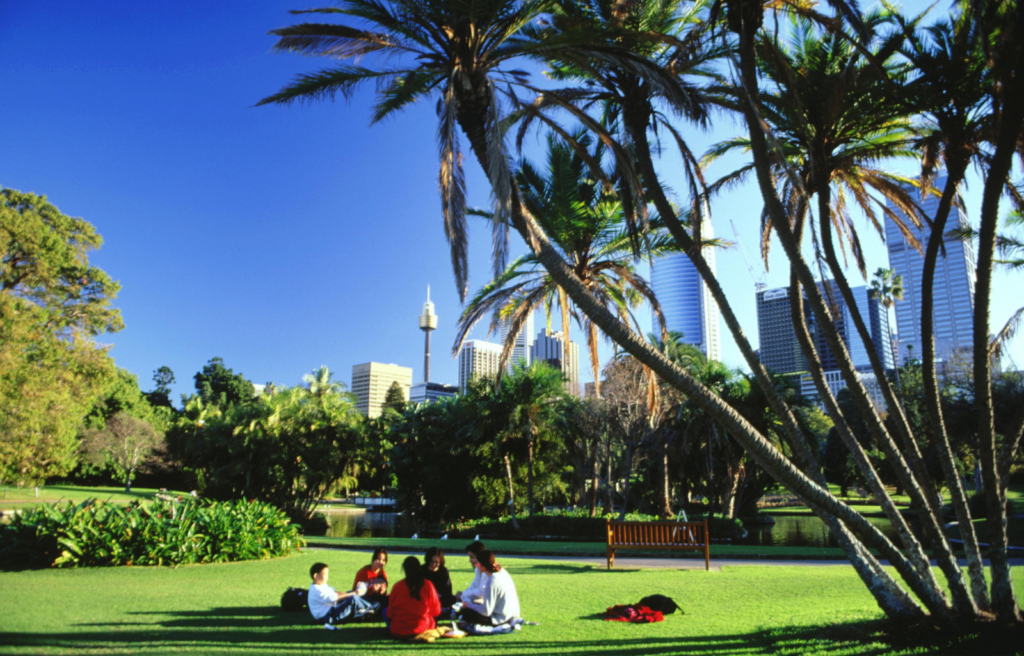
Access Black Mountain Nature Park and trek to the peak for stunning city views from the gardens. Looking for more gardens to explore in Canberra? A six-minute drive away, you’ll also appreciate visiting the National Arboretum in Canberra. The National Bonsai and Penjing collection, a Gallery of Gardens, picnic places with panoramic views, and an excellent children’s playground are all included in this 250 hectare natural reserve. It also has forests of rare native and exotic species. This is a fantastic choice if you’re seeking inexpensive activities in Canberra. The gardens are free to enter, although parking at the on-site lot costs a little amount.
Visit Canberra Today!
So there you have it – our top picks for things to do in Canberra. If you’re looking for a bit of an adrenaline rush, we recommend the War Memorial or Questacon. Or if you’d rather take things a little slower, why not check out one of the many museums or art galleries? And don’t forget that Canberra is also great for outdoorsy types – there are plenty of hiking trails and parks to explore. Austracks can help with all your travelling and accommodation needs so be sure to get in touch!



